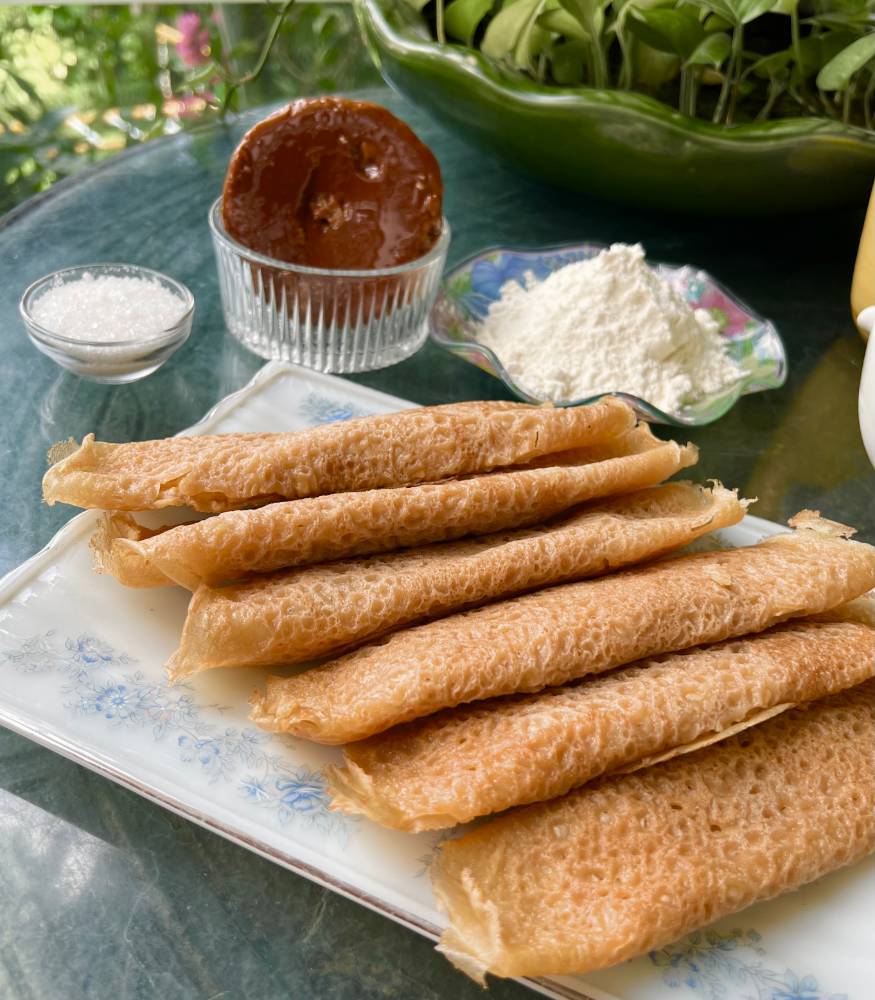Soft Bangladeshi rice-flour crepes filled with a sweet coconut and khoya mixture-perfect for winter breakfasts and festive celebrations.
Patishapta
Ingredients
For the crepes (shell):
- 1 cup rice flour
- ½ cup all-purpose flour maida
- ¼ cup semolina suji
- 2 cups milk adjust to make a thin, pourable batter
- Pinch of salt
For the filling:
- 1½ cups grated coconut fresh or desiccated
- ½ cup khoya milk solids, crumbled
- ½ cup jaggery or sugar
- 2 green cardamom pods seeds lightly crushed
Instructions
- Make the filling: In a skillet over medium heat, combine the grated coconut, khoya, jaggery (or sugar), and cardamom seeds. Cook, stirring constantly, until the mixture comes together into a soft, sticky mass. Remove from heat and set aside to cool.
- Prepare the batter: Whisk together the rice flour, all-purpose flour, semolina, milk, and salt until smooth, with the consistency of thin pancake batter.
- Cook the crepes: Heat a nonstick pan over medium heat and lightly grease. Pour a ladleful of batter, tilting the pan to swirl it into a thin, even circle. Cook for 1–2 minutes until the edges lift easily.
- Fill and roll: Spoon 1-2 tbsp of the coconut-khoya filling along one edge of the crepe. Gently roll it up like a spring roll. Transfer to a platter and repeat with the remaining batter and filling.
- Serve: Offer the patishapta warm or chilled. For extra indulgence, drizzle with sweetened condensed milk or kheer.
Notes
For the signature tender texture, ensure the batter is thin enough to spread easily but not so thin that it tears. Fresh coconut gives the best flavour, but desiccated works well-just hydrate it slightly in warm milk if too dry. Adjust the sweetness by tasting the filling before rolling. These crepes are best eaten the same day but can be stored, covered, in the refrigerator for up to a day; reheat gently on a hot griddle before serving. Patishapta is traditionally prepared in winter, when fresh date palm jaggery (nolen gur) and new rice flour are available. It is a symbol of abundance, joy and the agrarian roots of Bangladeshi culture – especially during the Nabanna festival which celebrates the new rice harvest. Nabanna is a traditional Bangladeshi harvest festival that celebrates the new rice crop as “naba anna” – new rice. The Aman dhan or winter paddy crop is harvested and feasts are prepared to celebrate the hard work that goes into producing the season’s first grain.

